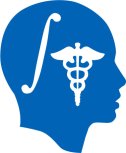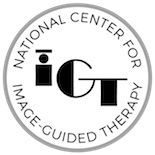SFN2011 Diffusion Tensor Imaging Analysis Workshop
From NAMIC Wiki
Home < SFN2011 Diffusion Tensor Imaging Analysis Workshop

| ||

|

|

|
PAGE UNDER CONSTRUCTION
Contents
White Matter Exploration with Diffusion Tensor Imaging: Fundamentals and Perspectives - A Hands-On Workshop by the National Alliance for Medical Imaging Computing (NA-MIC)
Introduction
This workshop has been submitted for review as a satellite event of the Annual Meeting of the Society for Neuroscience, November 12-16, Washington, DC
Satellite Workshop Goals
- To educate attendees in the fundamentals of Diffusion Tensor Imaging (DTI) data required to make informed decisions about how to analyze their own DTI data.
- To provide tutorials on DTI data validation and management (including how to put your image data into NRRD format).
- To provide hands on tutorials in the use of NA-MIC DTI analysis tools.
- To establish contact between NA-MIC Tookit experts (users and developers) and basic and clinical researchers in the global neuroimaging community.
Registration
- To register, send an e-mail to Katie Mastrogiacomo (kmast at nmr.mgh.harvard.edu). Please include your contact information including full spelling of your name, degree, current institution, preferred email address for communication, your educational background and training and your reason for attending. We would also appreciate it if you would indicate the characteristics of the computer you will be using for the workshop (OS, RAM, Processor).
- This Workshop is supported by the National Alliance for Medical Image Computing (NAMIC), funded by the National Institutes of Health through the NIH Roadmap for Medical Research, Grant U54 EB005149. Information on the National Centers for Biomedical Computing can be obtained from http://nihroadmap.nih.gov/bioinformatics.
Workshop Faculty
- Sonia Pujol, PhD, Harvard Medical School (Surgical Planning Laboratory, Department of Radiology, Brigham and Women's Hospital)
- Randy Gollub, MD, PhD, Harvard Medical School (Department of Psychiatry and Martinos Center, Department of Radiology, Massachussets General Hospital)
- Guido Gerig, PhD, ,The Scientific Computing and Imaging Institute, University of Utah
- Anastasia Yendiki, PhD, Harvard Medical School (Martinos Center, Department of Radiology, Massachussets General Hospital)
- Ipek Oguz, PhD, University of North Carolina Chapel Hill
Tentative Agenda
- 8:30 - 8:40 AM Goals of Workshop (Randy Gollub)
- 8:40 - 9:30 AM Theoretical foundations of Diffusion Imaging (Anastasia Yendiki)
- 9:30 - 10:15 AM Getting to Know DTI really, really well- tensors, glyphs and more (Guido Gerig)
- 10:15 -10:30 Coffee Break
- 10:30 - 11:45 AM DTI in research and in the clinics: current uses and future roadmap (Ipek Oguz)
- 11:45 - 1:15 Lunch on own
- 1:15 - 1:45 Challenges in clinical transfer of DT-MRI: towards validation of tractography (Sonia Pujol)
- 1:45 - 3:00 Hands-on Session 1- Diffusion Tensor Imaging Analysis within 3DSlicer: from DICOM DWI images to 3D fiber bundles (Sonia Pujol/Randy Gollub)
- 3:15 - 3:30 Coffee Break
- 3:30 - 4:45 Hands-on Session 2- White Matter Exploration for Neurosurgical Planning (Sonia Pujol/Randy Gollub)
- 4:45 - 5:00 Lessons in Multi-site DTI Acquisition- the BIRN experience (Randy Gollub)
- 5:00 - 5:30 Concluding remarks and Discussion
Preparation for Workshop -- Important Information for all attendees
This is hands-on training. All participants must come with their own computer and install the software and data at the links below. Windows XP, Linux or MacOS 10.4 or greater computers are supported. A minimum of 1 GB of RAM (2 GB if possible) and a dedicated graphic accelerator with 64mb of on board graphic memory are required.
The software and datasets for the workshop will be posted a few weeks before the event.
Suggested background reading for workshop:
- Le Bihan D, Mangin JF, Poupon C, et al. Diffusion tensor imaging:. concepts and applications. J Magn Reson Imaging 2001;13:534–546 [pdf download]
- Westin CF, Maier SE, Mamata H, Nabavi A, Jolesz FA, Kikinis R., Processing and Visualization for Diffusion Tensor MRI. Medical Image Analysis, 6(2)::93-108, June 2002 [pdf dowload]
- S. Mori and P.C.M. van Zijl, Fiber tracking: principles and strategies – a technical review. NMR in Biomedicine, 15(7-8):468-480, 2002 [pdf download]
- Mukherjee P, Berman JI, Chung SW, Hess CP, Henry RG. Diffusion tensor MR imaging and fiber tractography: theoretic underpinnings. AJNR American journal of neuroradiology (2008) vol. 29 (4) pp. 632-41
- Mukherjee P, Chung SW, Berman JI, Hess CP, Henry RG. Diffusion tensor MR imaging and fiber tractography: technical considerations. AJNR American journal of neuroradiology (2008) vol. 29 (5) pp. 843-52
- Diffusion MRI: Theory, Methods, and Applications. Edited by Derek K. Jones. Oxford University Press, 2011.
To learn more about the NA-MIC Toolkit
Please visit our Wiki page for general information and the NA-MIC Kit pages for specific information.